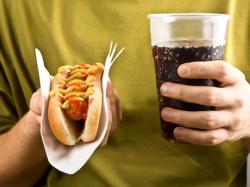Why Americans Are Eating Fewer Hot Dogs
July 1, 2013 | 1 min to read

Americans spent $1.7 billion on hot dogs last year—and that’s just at supermarkets; it doesn’t count wieners purchased at restaurants and sports facilities or from street vendors. And no day is better for hot dog consumption than the Fourth of July, when Americans are expected to eat about 150 million of them—enough to stretch from Washington, D.C., to Los Angeles more than five times.
While those numbers are impressive, overall hot dog sales are declining. According to figures from IRI, a Chicago-based market-research firm, sales dropped more than 3 percent in 2012 from 2011, following two consecutive years of smaller declines. Figures for this year are looking soft as well. The slump is surprising in light of the sluggish economy—hot dogs are usually considered the ideal recession foodstuff.
None of this surprises Josh Ozersky, a food journalist and historian. He predicts the hot dog will become increasingly marginalized as the U.S. palate broadens. “I would be willing to bet that more Americans, and especially younger Americans, now eat nachos or tacos than hot dogs,” he says. But what about the many outlets that serve nachos on hot dogs? “That’s just proof of the desperate state of the hot dog!” he says. “That’s like a middle-aged actress who gets Botox and breast implants to try to stay relevant.”
To read the rest of the story, please go to: Bloomberg Businessweek
